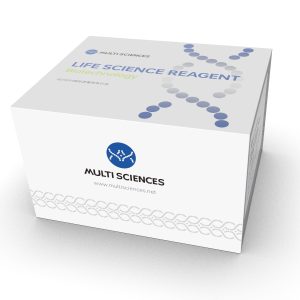HGNC ID: 5438
Target Abstract:
IFN-γ mainly produced by Th1 type cells, belongs to a member of the interferon family of type II cytokines, is a class of secreted glycoproteins, consisting of 143 amino acids, with a relative molecular mass of 16,942. IFN-γ is mainly produced by activated T cells and NK cells, with biological activities such as regulating the immune state of the organism, mediating cellular immunity, enhancing receptor-mediated phagocytosis, enhance the killing activity of macrophages and neutrophils, and have biological activities such as anti-viral infection and anti-tumor.
IFNG Target Infomation Overview
- Target Symbol: IFNG, interferon gamma
- Gene Groups: Interferons
IFNG, interferon gamma Target Infomation by Species
- Human
- Mouse
- Rat
Human IFNG Target Information
- Target Symbol: IFNG, interferon gamma
- Alias:
- IFG
- IFI
- IFN-gamma
- IMD69
- immune interferon
- interferon, gamma
- NCBI_Gene: 3458
- UniProtKB: P01579
Human IFNG Predicted Functions
Predicted to enable cytokine activity. Involved in several processes, including positive regulation of cell death; positive regulation of cell differentiation; and positive regulation of macromolecule metabolic process. Acts upstream of or within several processes, including positive regulation of gene expression; positive regulation of protein phosphorylation; and response to virus. Located in extracellular region. Implicated in several diseases, including ataxia telangiectasia; autoimmune disease (multiple); eczema herpeticum; factor VIII deficiency; and leukemia (multiple). Biomarker of several diseases, including acute retinal necrosis syndrome; allergic rhinitis; autoimmune disease (multiple); nephritis (multiple); and otitis media (multiple).
Mouse Ifng Target Information
- Target Symbol: Ifng, interferon gamma
- Alias:
- Ifg
- IFN-gamma
- NCBI_Gene: 15978
Mouse Ifng Predicted Functions
Enables cytokine activity. Involved in several processes, including cell surface receptor signaling pathway; positive regulation of macromolecule metabolic process; and regulation of generation of precursor metabolites and energy. Acts upstream of or within several processes, including CD8-positive, alpha-beta T cell differentiation involved in immune response; defense response to other organism; and positive regulation of macromolecule metabolic process. Located in external side of plasma membrane and extracellular space. Is expressed in several structures, including adipose tissue; alimentary system; genitourinary system; hemolymphoid system gland; and nervous system. Used to study several diseases, including aplastic anemia; hepatitis; malaria; medulloblastoma; and type 1 diabetes mellitus. Human ortholog(s) of this gene implicated in several diseases, including allergic rhinitis; ataxia telangiectasia; autoimmune disease (multiple); eczema herpeticum; and leukemia (multiple). Orthologous to human IFNG (interferon gamma).
Rat Ifng Target Information
- Target Symbol: Ifng, interferon gamma
- Alias:
- If2f
- IFN-gamma
- IFNG2
- interferon 2f
- NCBI_Gene: 25712
Rat Ifng Predicted Functions
Predicted to enable cytokine activity. Involved in several processes, including negative regulation of cell population proliferation; positive regulation of NMDA glutamate receptor activity; and positive regulation of macromolecule metabolic process. Located in several cellular components, including extracellular space; neuron projection; and perikaryon. Used to study several diseases, including Chagas disease; allergic conjunctivitis; allergic rhinitis; renal fibrosis; and ureteral obstruction. Biomarker of several diseases, including abdominal aortic aneurysm; autoimmune thyroiditis; pulpitis; tongue squamous cell carcinoma; and visual epilepsy. Human ortholog(s) of this gene implicated in several diseases, including ataxia telangiectasia; autoimmune disease (multiple); eczema herpeticum; factor VIII deficiency; and leukemia (multiple). Orthologous to human IFNG (interferon gamma).

